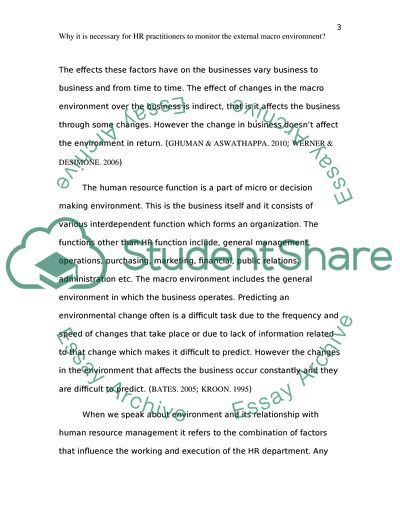Cite this document
(Role of Monitoring the External Macro Environment for HR Practitioners Coursework - 1, n.d.)
Role of Monitoring the External Macro Environment for HR Practitioners Coursework - 1. Retrieved from https://studentshare.org/human-resources/1595486-define-the-term-external-macro-environment-and-with-reference-to-relevant-academic-theory-explain-why-it-is-necessary-for-hr-practitioners-to-monitor-the-external-macro-environment-demonstrate-the-relevance-of-this-task-by-illustrating-how-econo
Role of Monitoring the External Macro Environment for HR Practitioners Coursework - 1. Retrieved from https://studentshare.org/human-resources/1595486-define-the-term-external-macro-environment-and-with-reference-to-relevant-academic-theory-explain-why-it-is-necessary-for-hr-practitioners-to-monitor-the-external-macro-environment-demonstrate-the-relevance-of-this-task-by-illustrating-how-econo
(Role of Monitoring the External Macro Environment for HR Practitioners Coursework - 1)
Role of Monitoring the External Macro Environment for HR Practitioners Coursework - 1. https://studentshare.org/human-resources/1595486-define-the-term-external-macro-environment-and-with-reference-to-relevant-academic-theory-explain-why-it-is-necessary-for-hr-practitioners-to-monitor-the-external-macro-environment-demonstrate-the-relevance-of-this-task-by-illustrating-how-econo.
Role of Monitoring the External Macro Environment for HR Practitioners Coursework - 1. https://studentshare.org/human-resources/1595486-define-the-term-external-macro-environment-and-with-reference-to-relevant-academic-theory-explain-why-it-is-necessary-for-hr-practitioners-to-monitor-the-external-macro-environment-demonstrate-the-relevance-of-this-task-by-illustrating-how-econo.
“Role of Monitoring the External Macro Environment for HR Practitioners Coursework - 1”, n.d. https://studentshare.org/human-resources/1595486-define-the-term-external-macro-environment-and-with-reference-to-relevant-academic-theory-explain-why-it-is-necessary-for-hr-practitioners-to-monitor-the-external-macro-environment-demonstrate-the-relevance-of-this-task-by-illustrating-how-econo.


